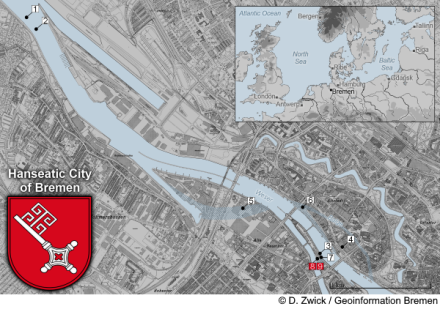History

The wrecks were well preserved up to lengths of 17 and 11 metres and represent river-craft. Only the bow and stern sections as well as parts of the side planking were not preserved.
Description
Teerhof 3 features a mast-step (cf. photo below). It can be doubted that the vessel carried a sail, so it seems more likely that it carried a towing-mast.

The wrecks feature so-called L-shaped chine girders, but with a greater angle in cross-section, as there is no sharp transition at the turn of the bilge.
Teerhof 3 (Lastkahn 1) dates to 1681 and Teerhof 4 (Lastkahn 2) to 1668. Both wrecks seem to have ended here at the same time in the beginning of the 18th century. They are situated in a former canal once seperating the Teerhof (Bremen's historic shipyard) and a gunpowder tower known as 'Braut' (literally: bride), which was filled at this time. Thus, the wrecks might have been purposely abandoned here to serve as foundation.
Status
The wrecks were salvaged and PEG-conserved at the DSM (German Maritime Museum) and studied within the framework of a Master's thesis.
References
- Bischop, D. (2011).
Die zwei Weserlastkähne der Beluga-Baugrube auf dem Bremer Teerhof.
Skyllis 10.
pp 56-64. - Mücke, R. (2011).
Weserlastkähne im archäologischen Befund.
Deutsches Schiffahrtsarchiv 34.
pp 35-86.